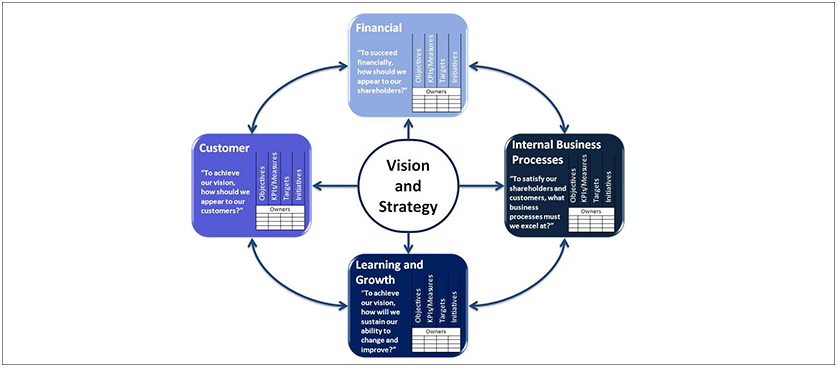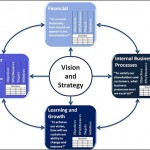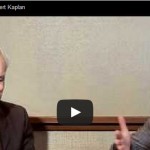Strategy Execution and the Balanced Scorecard – insights from Harvard Business School Professor Robert Kaplan from his 2010 visit to Australia

One of the leading international management thinkers, Professor Robert Kaplan from Harvard Business School made a visit in Australia in mid September 2010 to talk about the new developments in the field of strategic performance Management and Balanced Scorecard.
During several events organized both in Sydney and Melbourne, the professor shared his thoughts and insights on several topics related to strategic performance management and the Balanced Scorecard concept. Among the subjects’ addressed:
- The state of Global Performance Management in 2010;
- The latest developments in the Balanced Scorecard strategic management system;
- Ways to address and improve the customer profitability through Time Driven Activity Based Costing;
- How to measure risk and why most organizations focus their risk management efforts in the wrong directions;
- Leadership and the strategic management process.
One of the highlights of the discussions was the insights offered by Professor Kaplan on the best ways to increasing profits through Time Driven Activity Based Costing.
He emphasized that understanding customer and product profitability remains a major barrier of the strategy execution process. Professor Kaplan took the opinion that organizations should rethink the ways in which they asses the relation with the customer and its impact on the organization’s profitability. In his view, measuring customer retention is not the best indicator of how good an organization is performing in relation with its customers, as today diverse barriers might impede unsatisfied customers to move away to competition. As an alternative to % Customer retention, Kaplan proposed the use of the # Net Promoter Score.
Introduced by Fred Reichheld (Ritson, 2009), the Net Promoter Score® (NPS), is suggested as a highly relevant leading indicator of future purchase intentions and loyalty (Farris et al., 2006). Its calculation is based on comparing the promoters (people who are likely to recommend the product or the company) to the detractors (people, who, on the contrary, would make a negative word-of-mouth).
In a practical context, its measurement would involve a customer survey, consisting of a simple question (“How likely is that you would recommend the product/company to a friend or colleague?”) with an 11 point scale answer, from 0 – not at all up to 10 – extremely likely (Ritson, 2006). The answers are divided into three categories: promoters, neutrals and detractors. While neutrals are left aside, further on the volume of promoters and the volume of detractors are extracted as a percentage from the total respondents, and the difference between the two percentages is the NPS. For more insights on the Net Promoter Score visit smartkpis.com /blog.
Other performance indicators proposed by Professor Kaplan for measuring organization’s relation with the customers are:
- $ Customer acquisition cost
- $ Customer retention cost
- $ Life time value of the customer
- $ Customer profitability
The second interesting topic discussed by Professor Kaplan, while addressing to the Australian audience, was risk and risk management. The importance of addressing risk in the context of organizational strategic management is best emphasized by several quotes of the professor:
- “Risk Management is an extremely important function in an organization”
- “In most organizations is not being done well”
- “What is hard about judging risk is that some risk events have never occurred before and may never occur”
- “What is not okay is when you take a risk strategy, not to put in measurements to tell you when the risk event is occurring and not to train your employees to quickly react when the risk starts showing up” (Sydney Morning Herald, 2010)
While addressing all this issues related to risk, Professor Kaplan gave as a negative example, British Petroleum a company who apparently didn’t know how to best mitigate its risks and triggered the biggest ecological disaster in the history or United States.
One of the advices given by Professor Kaplan in regards with how companies could improve their risk management was to consider the developing of a Key Risk Indicator (KRI) scorecard to track risk events, right from the first stages of the strategy planning process. In suggesting this he identified three major risk areas that need to be addressed:
1. Governance and compliance risk
- Standardized duties;
- Segregation of duties;
- Internal control monitoring.
2. Operational and strategic risk
- Identify key risk events and risk indicators for strategy maps;
- Aggregate risk indicators into a Key Risk Indicator Scorecard;
- Set priorities for initiatives to mitigate the major risks identified.
3. External risk
- Identify critical risk events that could cause the entire strategy to fail;
- Tail risk;
- Role the scenario planning and tail risk meetings.
For additional information and examples of risk management indicators explore Risk Management KPIs examples section on smartkpis.com. Additionally, KPIs examples for Customer service area also available on the Sales and Customer Service functional area category of the site.
For more information on the Balanced Scorecard visit BalancedScorecardReview.com, eab group’s currently launched online platform which integrated information about the Balanced Scorecard concept.
References
- smartkpis.com (2010), Marketing Performance Management: the Net Promoter Score (NPS)
- The Sydney Morning Herald (2010), Strategist urges to address risk by Nicole Stevens, (accessed 24 September 2010)
- Kaplan, R. and Norton, D. (1996), The Balanced Scorecard – translating strategy into action, Harvard Business School Press, Boston, Massachusetts

Tags: Balanced Scorecard, Harvard Business School, KPI, KRI, Performance in Australia, Robert Kaplan





